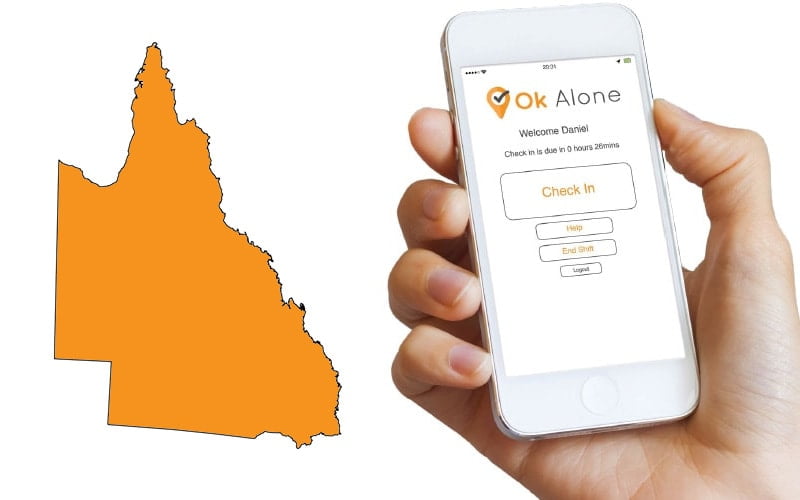In the state of Queensland, there are various acts and regulations related to lone working and work alone employees. To ensure comprehensive coverage of these policies and legislation, we have compiled all the information relevant to lone worker safety in this area. Whether you are an employer or employee, understanding the policies and regulations related to lone working in your State is essential for maintaining a safe working environment.
This is a fantastic video from Worksafe Queensland outlining safety practices for remote and isolated workers.
Legislation in Queensland
There is a great working alone policy in Queensland that looks out for lone worker safety. The policy states that employers must provide an effective means of communication between remote/isolated workers and a supervisor or a way for them to access the emergency services. The Managing the Work Environment and Facilities Code of Practice 2021 suggests that to improve the health and safety of those who work alone, employees should be given a duress (panic) alarm that enables them to get immediate assistance.
Work Health and Safety Act 2011
Division 2 Primary duty of care
19 Primary duty of care
(1) A person conducting a business or undertaking must ensure, so far as is reasonably practicable, the health and safety of—
(a) workers engaged, or caused to be engaged by the person; and
(b) workers whose activities in carrying out work are influenced or directed by the person; while the workers are at work in the business or undertaking.
(2) A person conducting a business or undertaking must ensure, so far as is reasonably practicable, that the health and safety of other persons is not put at risk from work carried out as part of the conduct of the business or undertaking.
(3) Without limiting subsections (1) and (2), a person conducting a business or undertaking must ensure, so far as is reasonably practicable—
(a) the provision and maintenance of a work environment without risks to health and safety; and
(b) the provision and maintenance of safe plant and structures; and
(c) the provision and maintenance of safe systems of work; and
(d) the safe use, handling and storage of plant, structures and substances; and
(e) the provision of adequate facilities for the welfare at work of workers in carrying out work for the business or undertaking, including ensuring access to those facilities; and
(f) the provision of any information, training, instruction or supervision that is necessary to protect all persons from risks to their health and safety arising from work carried out as part of the conduct of the business or undertaking; and
(g) that the health of workers and the conditions at the workplace are monitored for the purpose of preventing illness or injury of workers arising from the conduct of the business or undertaking.
(Current as at 1 March 2023)
Work Health and Safety Regulation 2011
Division 6 Remote or isolated work
WHS 48 Remote or isolated work
(1) A person conducting a business or undertaking must manage risks to the health and safety of a worker associated with remote or isolated work under part 3.1.
Notes –
1 – WHS Act – Section 19, see section 9
2 – For general risk management requirements, see part 3.1
(2) In minimising risks to the health and safety of workers associated with remote or isolate work, a person conducting a business or undertaking must provide a system of work that includes effective communication with the worker.
Maximum penalty – 60 penalty units.
(3) In this section—
assistance includes rescue, medical assistance and the attendance of emergency service workers.
remote or isolated work, in relation to a worker, means work that is isolated from the assistance of other persons because of location, time or the nature of the work.
(Current as at 1 January 2023)
Communication with lone workers
From 1 January 2014 duty holders were legally required to manage any risks to the health and safety of remote or isolated workers and implement control measures that include effective communication with remote and isolated workers, which means ensuring that they can access the assistance of emergency services.
A worker may be isolated even if other people are close by. For example, a community nurse working in the middle of the city conducting clinical visits at night could be considered an isolated worker. In this case, the worker may require some form of duress alarm to enable access to assistance in the case of an emergency.
Want to Try the Ok Alone App?
Ok Alone is a lone worker solution that uses a worker’s own smartphone to protect their health and safety. The lone worker app connects to a cloud-based dashboard that allows a supervisor to monitor the well being of their workers and get a precise GPS location if a worker is in distress.

As an expert in lone worker content management, I possess an extensive knowledge base and experience in the area of lone working and safety monitoring. My expertise in this field encompasses a wide range of areas, including risk assessment, training, communication, and technology. I have a deep understanding of the unique risks associated with lone workers and have researched and written many projects and articles to educate people in how to mitigate these risks.
Throughout my time with Ok Alone, I have kept up to date with technological developments, legislative changes and regulations that have been introduced to help organizations ensure the safety of their lone workers.

